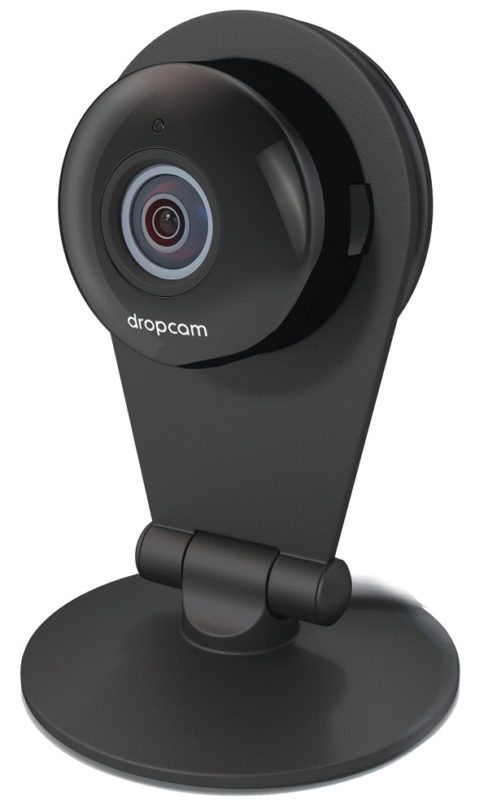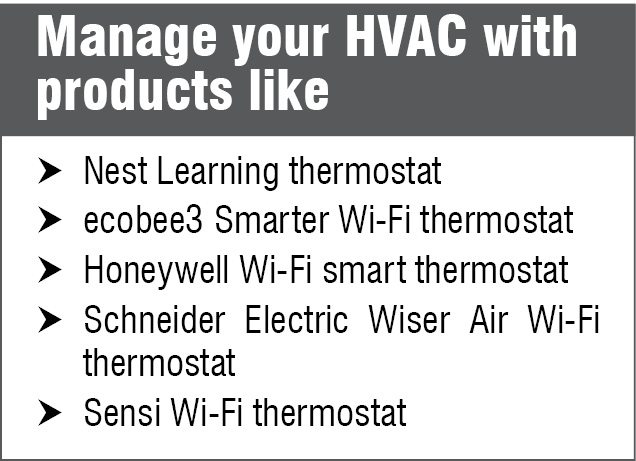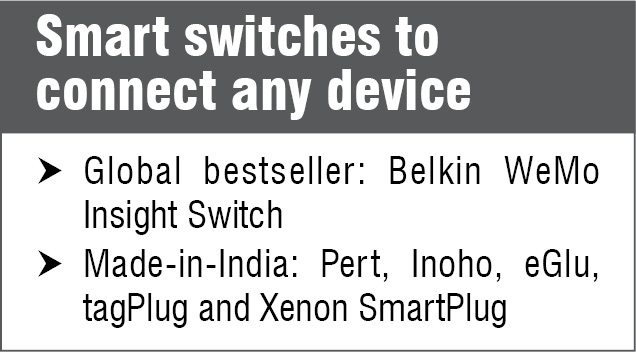One app to rule them all
Though it is nice to have a home full of smartdevices, it can be a headache managing these if each one had a separate app and each used a different protocol. “There is no doubt that there is growing popularity of smartdevices, be it wearables, tablets, smartphones, extending to smarthomes and even smartcities. However, these systems are under constant pressure to deliver the correct functionality at the right time, and at the right speed. The challenges these face are power and cost. Though flexibility and adaptability are guaranteed once we shift to these systems, there are issues involved in handing multiple connected devices. It is important that all these devices are connected over a converged Internet Protocol (IP) network. This will help pave the way for interactive, seamless and personalised services,” says Sanjay Gupta, India country manager, NXP Semiconductors. NXP works with ecosystem partners to enable seamless, secure interconnectivity across smartdevices, agnostic to the wireless connectivity protocols used.

There are a number of easy-to-use, plug-and-play hubs and apps that help you manage several devices using one dashboard. In most cases, the hubs are also capable of handling more than one communications protocol, extending the choice of devices that can be connected and managed through these. From Apple HomeKit to Wink, Samsung SmartThings, Staples Connect and Revolv, there are lots of choices in this space. In order to simplify home management, it is better you choose devices that are compatible with a single platform so you can unify these easily.
Google Weave. This is a cross-platform protocol and infrastructure, which aims to unify products from several manufacturers onto a single platform, to make it easy to set up and manage multiple devices from smartphones and the Web.
 Weave aims to provide standardised schemas that can define device interoperability regardless of brand or manufacturer. This not only makes it easy for users but also for developers, who can develop apps for the physical, connected world, just like they would for Android or iOS devices.
Weave aims to provide standardised schemas that can define device interoperability regardless of brand or manufacturer. This not only makes it easy for users but also for developers, who can develop apps for the physical, connected world, just like they would for Android or iOS devices.
Nest Weave. This is not the same as Google’s Weave although Google owns Nest. Nest’s Weave is a communications protocol based on Thread, which Nest has been using for several years now. In a smart move, Nest has now opened up this secure, reliable, low-power, low-latency (100ms), peer-to-peer connection standard for other smart home device manufacturers to use.
In a Weave network, devices talk to one another directly without going through a mobile app or a router. This means that the network is up even when Wi-Fi connection is down. This makes it ideal for always-on devices like smartlocks.
Products that adopt Nest protocol are certified as ‘Works with Nest.’ Once such a product is added to a home that already has another Nest product, there is practically no set up involved. The device immediately syncs with other devices and gets recognised by the apps also, making it easy to manage multiple devices.
Apple HomeKit. HomeKit is a home automation platform that lets you control all compatible home appliances securely and conveniently using an iOS device. The idea is to be able to install several disparate devices in your house, forget all about their individual apps and manage these using HomeKit.
You can pre-program single commands or moods that achieve several tasks at one go. For example, when you tell the app that you are going to bed, it automatically dims the lights, adjusts the temperature of your bedroom’s air-conditioner, turns on the bedside reading lights and so on. With Siri, HomeKit is also voice-enabled.
Windows 10 and Cortana. Microsoft hopes to achieve a similar feat in the near future by placing Windows 10 and Cortana at the realm of smarthomes. It will enable the same kind of unified access to devices with voice and gesture support, thanks to Cortana. Although currently Windows is compatible only with devices running AllJoyn protocol, it soon plans to work with a wide range of devices and appliances by integrating the new Open Connectivity Foundation (OCF) protocols, scheduled to be released in 2017.
Amazon Echo. Amazon’s Echo, voice-enabled with Alexa, has already made a mark for itself in the home automation space. The new, low-cost version called Echo Dot, also voice-enabled, seems equally successful. Wake up your Echo by calling it Amazon, Echo or Alexa, give it an instruction or ask a question and experience the convenience of having a personal assistant.
Echo can play music, read books, tell you the weather and control smart home devices from multiple makers like WeMo, Philips Hue, Samsung SmartThings, Wink, Insteon, Nest and ecobee.
Intraix KLUG. A recent innovation, KLUG Home from Intraix, is packaged like a simple universal serial bus (USB) stick that plugs into your Wi-Fi router. It connects wirelessly to a variety of smartdevices from various manufacturers and uses machine learning to study your usage patterns and learn your personal preferences. This helps it to automatically manage your home. You can also manually voice-control the devices connected to KLUG.
Inoho. In India, a Bangalore based startup called Inoho is quietly growing, with a home automation solution that is perfect for an average Indian household, where existing devices such as tubelights, fans and geysers might not really be smart. Inoho adds smartness to dumb devices, too, and enables you to manage all of these using a single app.

 “Managing multiple connected devices, when each device is connected individually, can be a pain in the neck. It becomes a connected chaos. Connected devices in a home can have different manifestations or functions, for example, on and off for lights, drawing and raising of curtains, video feeds from cameras, cooking functions on the microwave, wash cycles in a washing machine and so on.
“Managing multiple connected devices, when each device is connected individually, can be a pain in the neck. It becomes a connected chaos. Connected devices in a home can have different manifestations or functions, for example, on and off for lights, drawing and raising of curtains, video feeds from cameras, cooking functions on the microwave, wash cycles in a washing machine and so on.
“Eighty per cent of the interactions in a home are on/off interactions, which is what our first product targeted. We have now integrated other devices as well, for example, motorised curtain controls and connected video cameras,” says Deepankar Garg, co-founder of Inoho.
At the heart of Inoho solution is the home controller, a central platform that talks to the peripherals connected to it. It consists of a processing unit and communication modules. Their first peripheral is a switchboard module, which fits easily behind the switchboards at home. It combines communications, processing and actuators (to achieve on and off).
Then, there is the Cloud server that can help users access, control and monitor devices from anywhere in the world using the app as the front-end. There is a Web version of the app that can be run on any browser, as well as mobile versions for iOS and Android devices.
“Inoho has not covered the universe of functions or devices, for that matter, I do not think anyone has. Integration onto the platform is going to be a continuous process. And we will be continuously adding more products and functions and tying up with appliance manufacturers so that users can do everything centrally, and all devices can learn from and talk to each other. It is a continuous process,” explains Garg.
In the days to come, Inoho plans to enhance their switchboard module with different configurations and form factors, add more peripherals to their platform and also enhance the platform itself so that functionality and intelligence of the platform is more than the sum of its individual parts.
Adding security to the equation
With constant developments in embedded hardware and operating OSes, displays and user interfaces, it is possible to develop a smartproduct for almost any requirement. And if you make it compatible with one of the popular platforms, then it becomes simple to set up and use, too. However, can security be taken for granted as much as smartness and simplicity?
During a recent research on the security of Internet-connected home devices, doctoral students at Princeton University, USA, found that several popular devices were leaking information such as zip codes of users, by sending these over the Internet without proper encryption.











